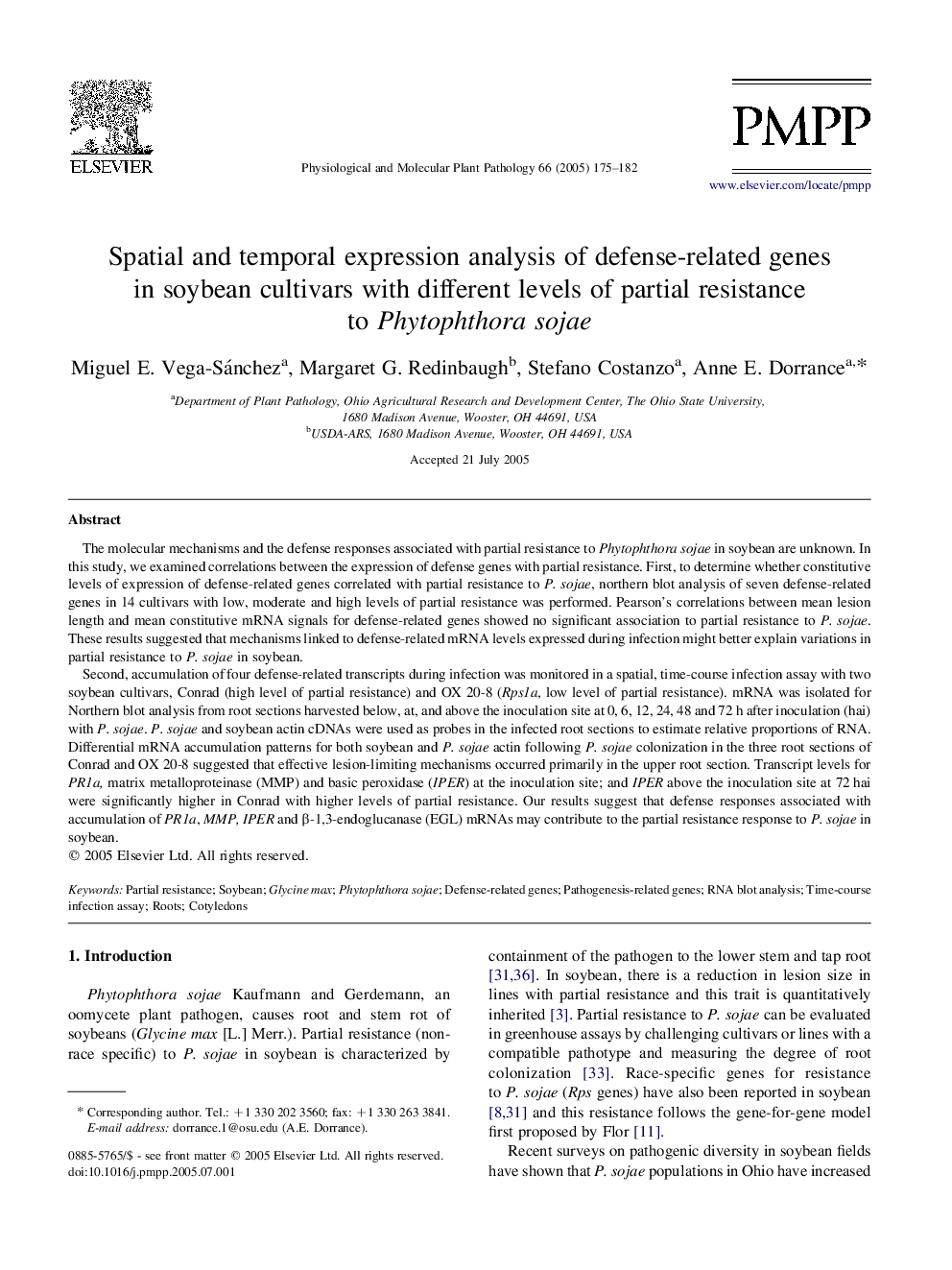| Article ID | Journal | Published Year | Pages | File Type |
|---|---|---|---|---|
| 9144604 | Physiological and Molecular Plant Pathology | 2005 | 8 Pages |
Abstract
Second, accumulation of four defense-related transcripts during infection was monitored in a spatial, time-course infection assay with two soybean cultivars, Conrad (high level of partial resistance) and OX 20-8 (Rps1a, low level of partial resistance). mRNA was isolated for Northern blot analysis from root sections harvested below, at, and above the inoculation site at 0, 6, 12, 24, 48 and 72 h after inoculation (hai) with P. sojae. P. sojae and soybean actin cDNAs were used as probes in the infected root sections to estimate relative proportions of RNA. Differential mRNA accumulation patterns for both soybean and P. sojae actin following P. sojae colonization in the three root sections of Conrad and OX 20-8 suggested that effective lesion-limiting mechanisms occurred primarily in the upper root section. Transcript levels for PR1a, matrix metalloproteinase (MMP) and basic peroxidase (IPER) at the inoculation site; and IPER above the inoculation site at 72 hai were significantly higher in Conrad with higher levels of partial resistance. Our results suggest that defense responses associated with accumulation of PR1a, MMP, IPER and β-1,3-endoglucanase (EGL) mRNAs may contribute to the partial resistance response to P. sojae in soybean.
Keywords
Related Topics
Life Sciences
Agricultural and Biological Sciences
Plant Science
Authors
Miguel E. Vega-Sánchez, Margaret G. Redinbaugh, Stefano Costanzo, Anne E. Dorrance,
